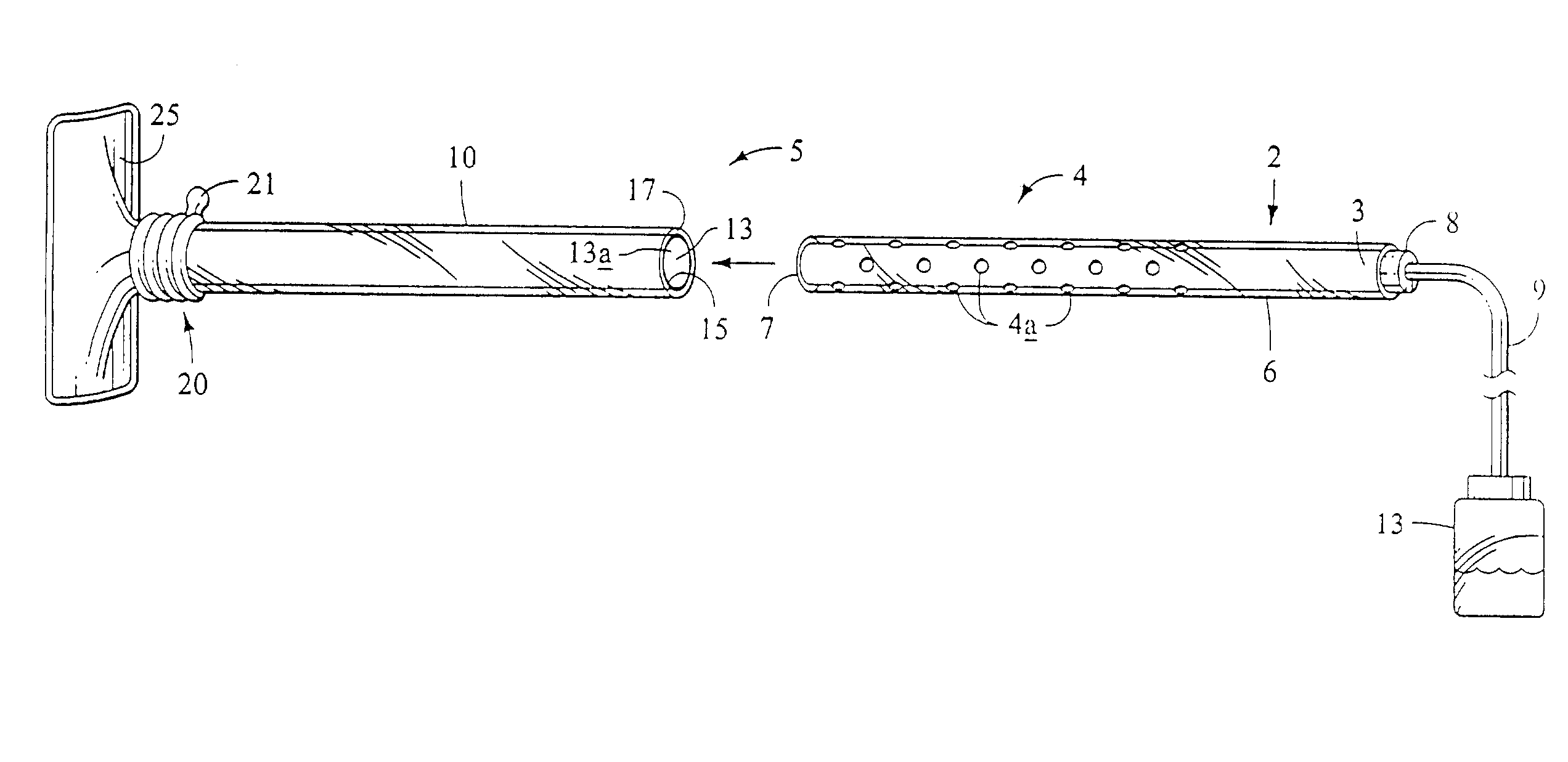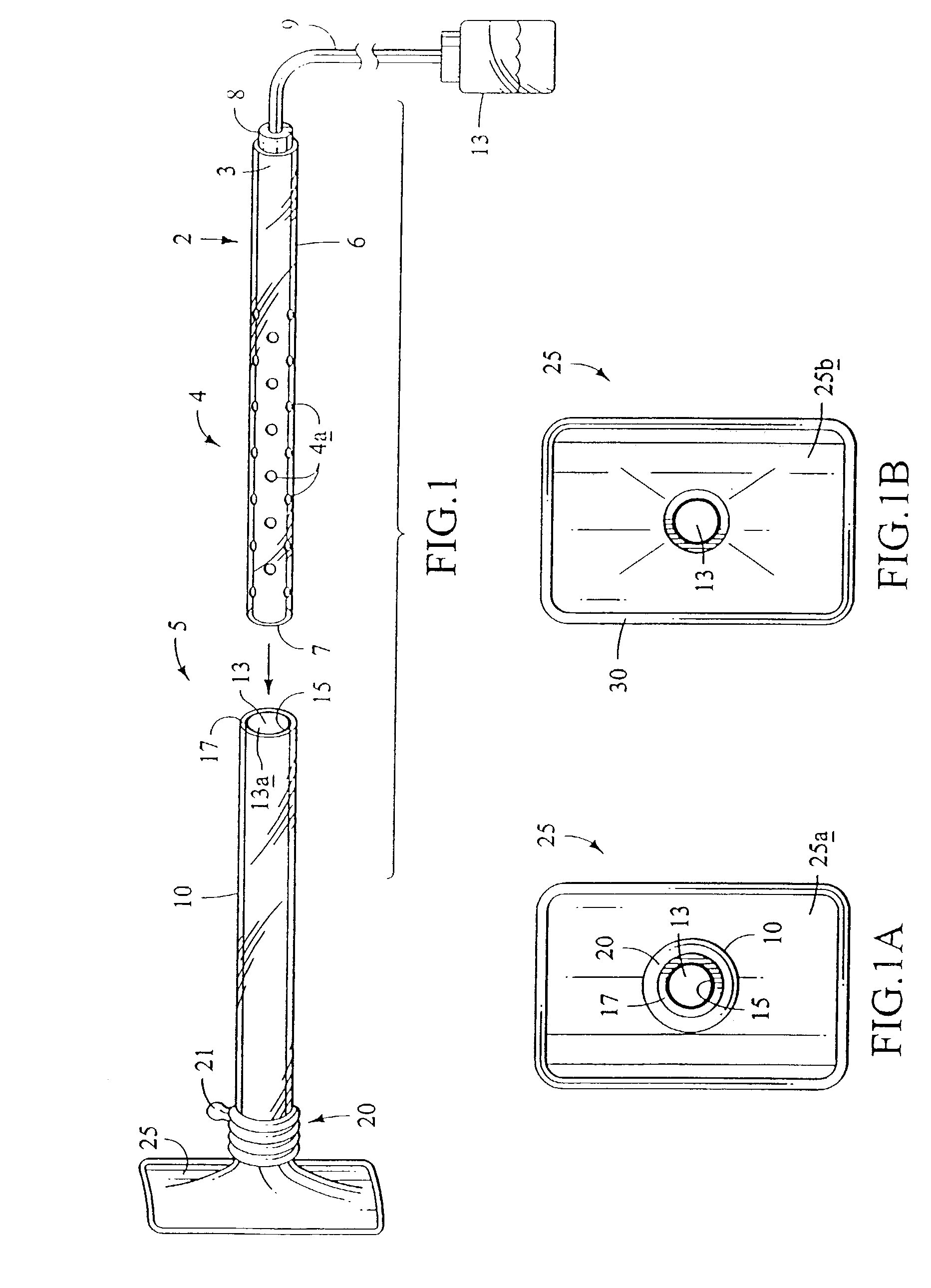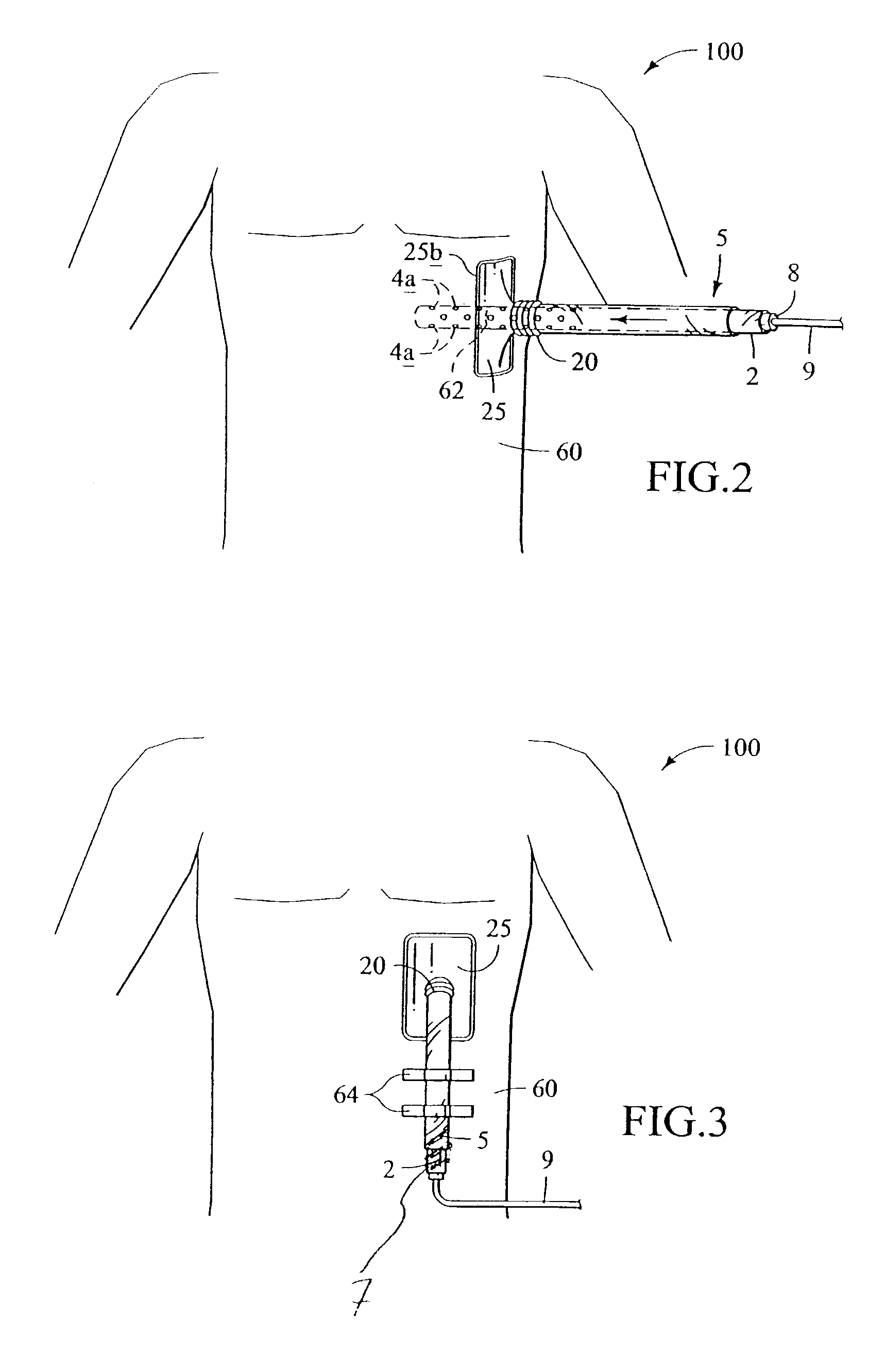Sheath device with dressing for prevention of pneumothorax.
a technology of pneumothorax and dressing, which is applied in the field of dressings with dressings for preventing pneumothorax, can solve the problems of respiratory failure, lung infection, respiratory failure, etc., and achieve the effect of facilitating the healing of the chest incision
- Summary
- Abstract
- Description
- Claims
- Application Information
AI Technical Summary
Benefits of technology
Problems solved by technology
Method used
Image
Examples
first embodiment
[0028]The joint 20 is preferably a flexible and air-impermeable boot that joins the body 10 with the base 25. By “flexible” it is meant that the material forming the joint 20 can be bent with minimal effort. The joint includes ridged annular raised portions 21 along its walls to provide a corrugated structure that allows the joints to be bent to approximately 90° without closing off its internal throughgoing airspace. The joint 20 is attached at one end with the base 25 and attached at the opposing end with the body 10. Preferably, the joint 20 is constructed of a latex material having a wall thickness sufficient to support its annular corrugated structure. Other, non-corrugated configurations may of course be utilized to lend flexibility to the structure of the joint 20. In a first embodiment, the joint 20 between body 10 and the chest tube 2 may be manually sealable, as described below.
[0029]As shown in FIG. 1a, the base 25 includes a front side 25a that is sealed to the joint 20....
embodiment 300
[0038]In another embodiment 300, the joint 320 may be automatically self-sealable, as depicted in FIG. 9. As shown in the Figure, the interior of the joint 320 includes self-sealing adhesive strips having portions 340a and 340b. Preferably, the adhesive portions of the strips 340a and 340b generally face each other. After the chest tube is removed past the joint 320 into the body 310, the adhesive strips 340a may be pinched manually onto adhesive strip 340b within the joint 320 from the outside of the joint 320, creating an air-impermeable seal in the joint 320. The body 310 and a portion of the joint 320 may then be separated from the sealed dressing portion as described above. As in the above-described embodiment, the automatically sealable embodiment provides a mechanism with which a chest tube is removed in an airtight environment, thereby significantly reducing the risk of pneumothorax.
[0039]In another embodiment of the invention, to further speed chest tube removal while preve...
PUM
 Login to View More
Login to View More Abstract
Description
Claims
Application Information
 Login to View More
Login to View More - R&D
- Intellectual Property
- Life Sciences
- Materials
- Tech Scout
- Unparalleled Data Quality
- Higher Quality Content
- 60% Fewer Hallucinations
Browse by: Latest US Patents, China's latest patents, Technical Efficacy Thesaurus, Application Domain, Technology Topic, Popular Technical Reports.
© 2025 PatSnap. All rights reserved.Legal|Privacy policy|Modern Slavery Act Transparency Statement|Sitemap|About US| Contact US: help@patsnap.com



